Welcome to the Amira-Avizo Software Use Case Gallery
Below you will find a collection of use cases of our 3D data visualization and analysis software. These use cases include scientific publications, articles, papers, posters, presentations or even videos that show how Amira-Avizo Software is used to address various scientific and industrial research topics.
Use the Domain selector to filter by main application area, and use the Search box to enter keywords related to specific topics you are interested in.
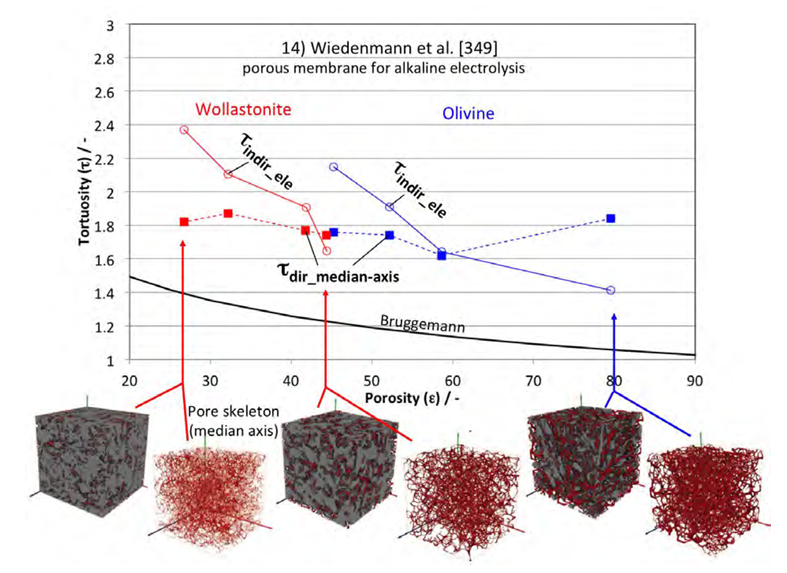
This study provides a comprehensive review of tortuosity and its impact on the transport properties of porous media. It discusses the classical theories and equations related to tortuosity for flow, conduction, and diffusion. The study also highlights the evolution of these theories and their connection to methodologies such as tomography and 3D image analysis. In order to clarify the topic, a new classification scheme and nomenclature for different types of tortuosity are proposed. The study... Read more
Holzer, L. *1, Marmet, P. 1, Fingerle, M. 2, Wiegmann, A. 2, Neumann, M. 3, Schmidt, V. 3
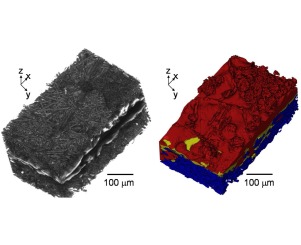
Investigation of Hot Pressed Polymer Electrolyte Fuel Cell Assemblies via X-ray Computed Tomography
The hot pressing process for fabricating membrane electrode assemblies (MEAs) has been widely adopted, yet little is known of its effects on the microstructural properties of the different components of the MEA. In particular, the interaction of the electrolyte, electrode and gas diffusion layer (GDL) due to lamination is difficult to probe as conventional imaging techniques cannot access the internal structure of the MEA. Here, a novel approach is used, which combines characterisation of hot... Read more
Q. Meyer, N. Mansor, F. Iacoviello, P.L. Cullen, R. Jervis, D. Finegan, C. Tan, J. Bailey, P. R. Shearing, D. J. L. Brett
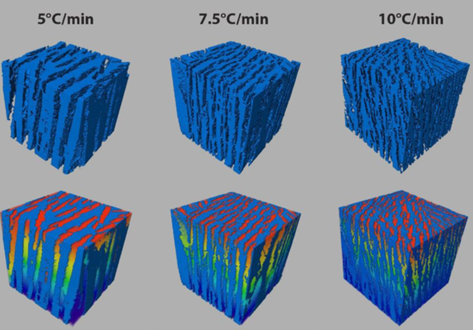
The prevailing electrode fabrication method for lithium-ion battery electrodes includes calendering at high pressures to densify the electrode and promote adhesion to the metal current collector.
However, this process increases the tortuosity of the pore network in the primary transport direction and imposes severe tradeoffs between electrode thickness and rate capability. With the aim of understanding the impact of pore tortuosity on electrode kinetics, and enabling cell designs with ... Read more
Benjamin Delattre, Ruhul Amin, Jonathan Sander, Joël De Coninck, Antoni P. Tomsia and Yet-Ming Chiang

Classification and delineation of the motor-related nuclei in the human thalamus have been the focus of numerous discussions for a long time. Difficulties in finding consensus have for the most part been caused by paucity of direct experimental data on connections of individual nuclear entities. Kultas-Ilinsky et al. (2011, J Comp Neurol, 519:2811-2837) showed that distribution of the isoform 65 of glutamic acid decarboxylase (GAD65), the enzyme that synthesizes inhibitory neurotransmitt... Read more
Igor Ilinsky, Andreas Horn, Perrine Paul-Gilloteaux, Pierre Gressens, Catherine Verney, Kristy Kultas-Ilinsky
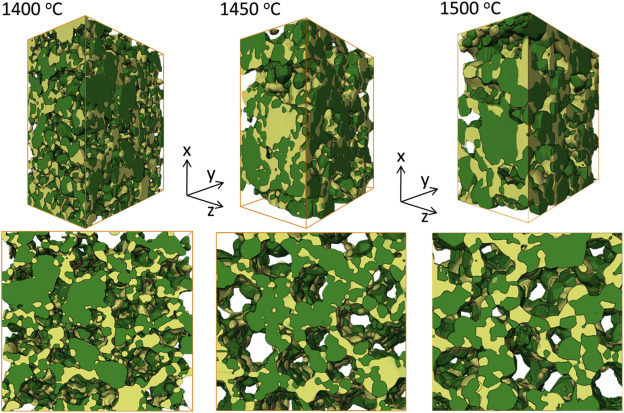
High performance anode with dendritic porous structure for low temperature solid oxide fuel cells
A dendritic porous supported microstructure simultaneously creates small pore size and broad gas diffusion pathways in a solid oxide fuel cell anode membrane. This microstructure also achieves pore sizes that reduce with increasing depth within the membrane without increasing the structure tortuosity. Such a microstructure supplies high triple phase boundary density, fast gas diffusion and low polarization resistance. Here we characterise the performance of a porous anode with such a dendriti... Read more
Xin Shao, William D.A. Rickard, Dehua Dong, Huu Dang , Martin Saunders, Aaron Dodd, Gordon Parkinson, Chun-Zhu Li
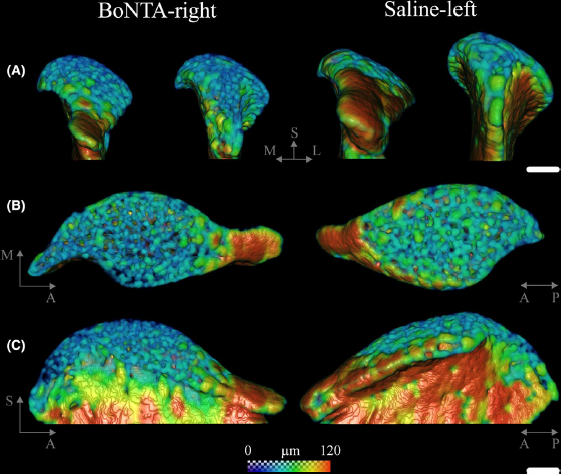
Masseter muscle function influences mandibular bone homeostasis. As previously reported, bone resorption markers increased in the mouse mandibular condyle two days after masseter paralysis induced with botulinum toxin type A (BoNTA), followed by local bone loss.
This study aimed to evaluate the bone quality of both the mandibular condyle and alveolar process in the mandible of adult mice during the early stage of a BoNTA‐induced masseter muscle atrophy, using a combined 3D histomorpho... Read more
Julián Balanta‐Melo, María Angélica Torres‐Quintana, Maximilian Bemmann, Carolina Vega, Constanza González, Kornelius Kupczik, Viviana Toro‐Ibacache, Sonja Buvinic
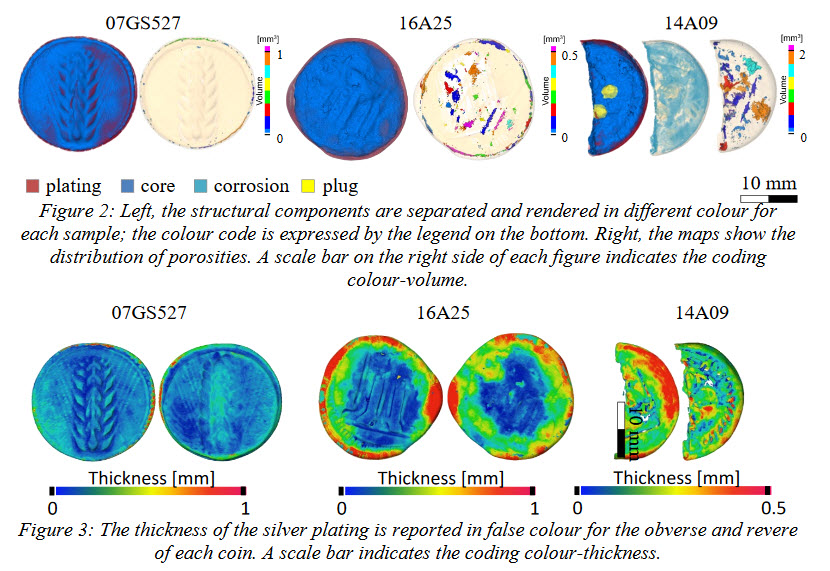
A Neutron Tomographic Analysis of Plated Silver Coins from Ancient Greece Official or Illegal?
In the 6th century BC different techniques of coin manufacture were employed by mints in mainland Greece and in the Greek colonies in Southern Italy. In Greece these techniques were evidently derived from the Lydians and consisted in striking a piece of cast metal of predetermined weight (a ‘blank’ or flan) between two engraved dies made of hardened bronze. Colonies in Magna Graecia, however, uniquely developed another set of minting techniques to produce what today is called incuse coina... Read more
Scott Olsen, Filomena Silvemini, Ulf Garbe, Max Avdeev, Joel Davis, Vladimir Luzin, Ken Sheedy
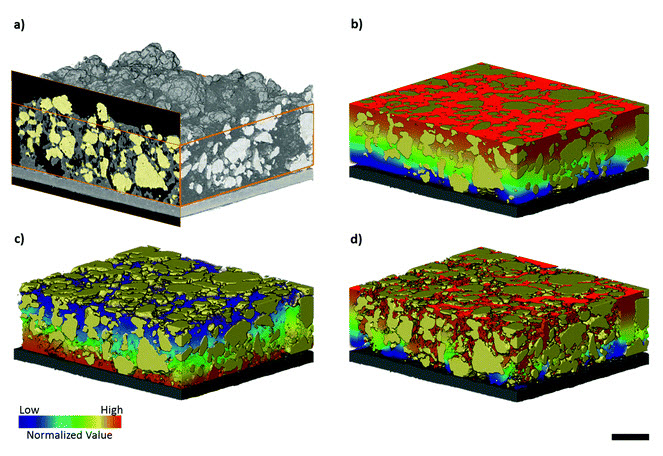
Three-dimensional image based modelling of transport parameters in lithium–sulfur batteries
An elemental sulfur electrode was imaged with X-ray micro and nano computed tomography and segmented into its constituent phases. Morphological parameters including phase fractions and pore and particle size distributions were calculated directly from labelled image data, and flux based simulations were performed to determine the effective molecular diffusivity of the pore phase and electrical conductivity of the conductive carbon and binder phase, D... Read more
Chun Tan, Matthew D. R. Kok , Sohrab R. Daemi , Daniel J. L. Brett and Paul R. Shearing
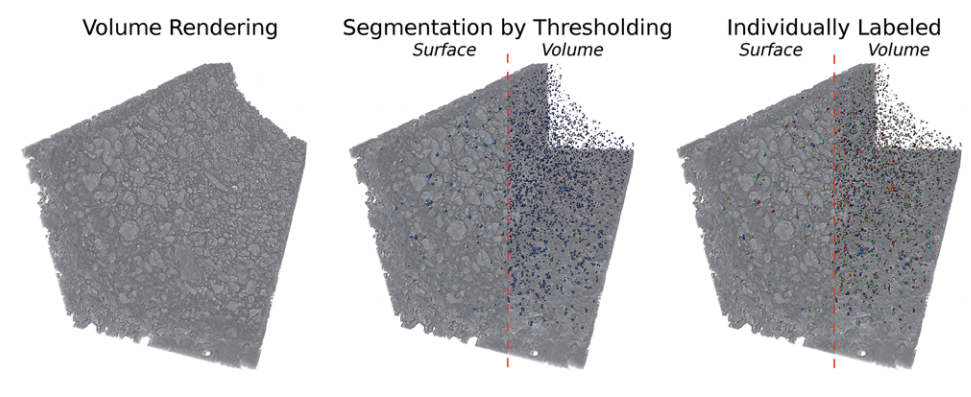
Aging of a Pt/Al2O3 exhaust gas catalyst monitored by quasi in situ X-ray micro computed tomography
Catalyst aging effects were analyzed using X-ray absorption micro-computed tomography in combination with conventional characterization methods on various length scales ranging from nm to μm to gain insight into deactivation mechanisms.
For this purpose, a 4 wt% Pt/Al2O3 model exhaust gas catalyst was coated on a cordierite honeycomb and subjected to sequential thermal aging in static air at 950 °C for 4, 8, 12 and 24 hours. The ag... Read more
Georg Hofmann, Amélie Rochet, Elen Ogel, Maria Casapu, Stephan Ritter, Malte Ogurreck and Jan-Dierk Grunwaldt
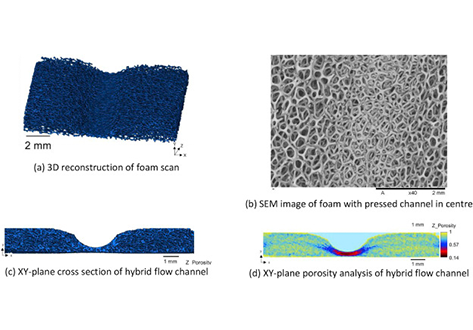
The flow distribution behaviour of open-cell metallic foam fuel cell flow-fields are evaluated using ex-situ optical analysis and X-ray computed tomography (X-ray CT). Five different manifold designs are evaluated and flow distribution and pressure drop ... Read more
A.Fly, D.Butcher, Q.Meyer, M.Whiteley, A.Spencer, C.Kim, P.R.Shearing, D.J.L.Brett, R.Chen
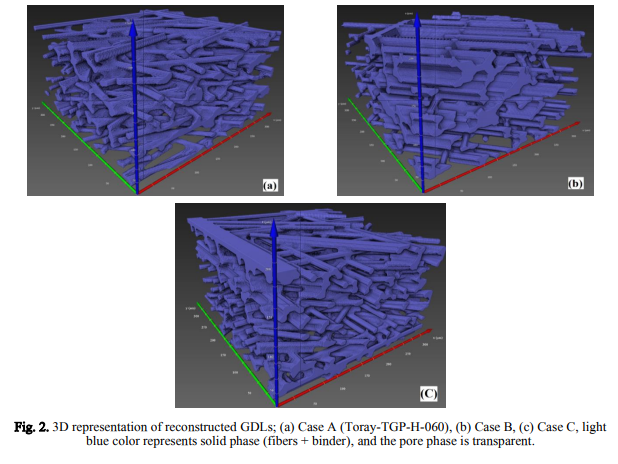
Stochastic reconstruction of carbon fiber paper gas diffusion layers of PEFCs: A comparative study
Fuel cells are electrochemical devices that convert the chemical energy of fuels into electrical energy. An ideal option for a wide variety of portable, stationary, and automotive applications is using the polymer electrolyte
fuel cells due to their modular design, high efficiency, and environmental benefits.
A 3D microstructure of the non-woven gas diffusion layers (GDLs) of polymer electrolyte fuel cells (PEFCs) is reconstructed using a stochastic method. For a commercial GDL, ... Read more
Sepehr Sima Afrookhteh, Jalil Jamali, Mohsen Shakeric, Majid Baniassadi
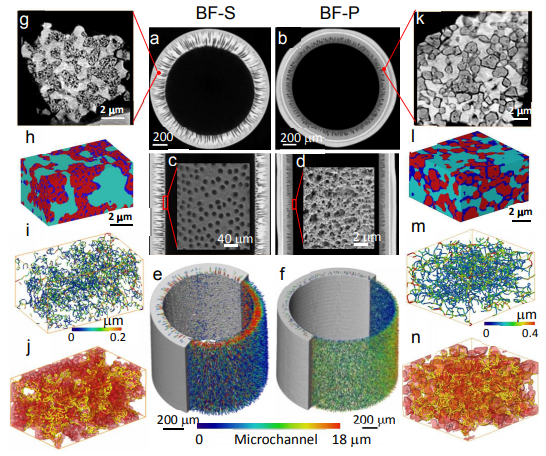
Mass transport can significantly limit the rate of reaction and lead to concentration polarization in electrochemical devices, especially under the conditions of high operating current density.
In this study we investigate hierarchically structured micro-tubular solid
oxide fuel cells (MT-SOFC) fabricated by phase inversion technique and quantitatively assess the mass transport and electrochemical performance improvement compared to a conventional tubular SOFC. We present pioneer... Read more
Xuekun Lu, Tao Li, Antonio Bertei, Jason I S Cho , Thomas M.M. Heenan , Rabuni Mohamad, Kang Li, Dan JL Brett, Paul R Shearing
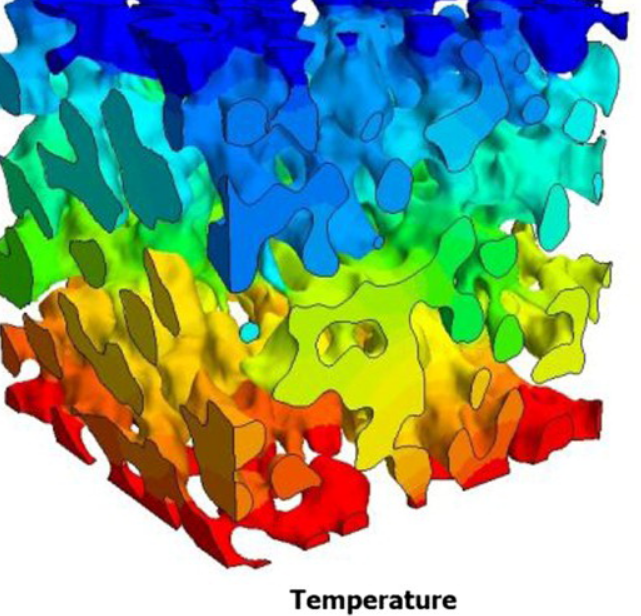
Tortuosity in electrochemical devices: a review of calculation approaches
Here, a review of tortuosity calculation procedures applied in the field of electrochemical devices is presented to better understand the resulting values presented in the literature. Visible differences between calculation methods are observed, especially when using porosity–tortuosity relationships and when comparing geometric and flux-based tortuosity calculation approaches.
Read more
Bernhard Tjaden, Dan J. L. Brett, Paul R. Shearing